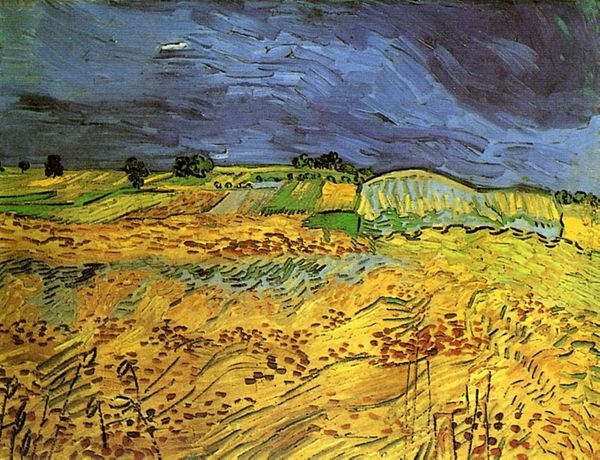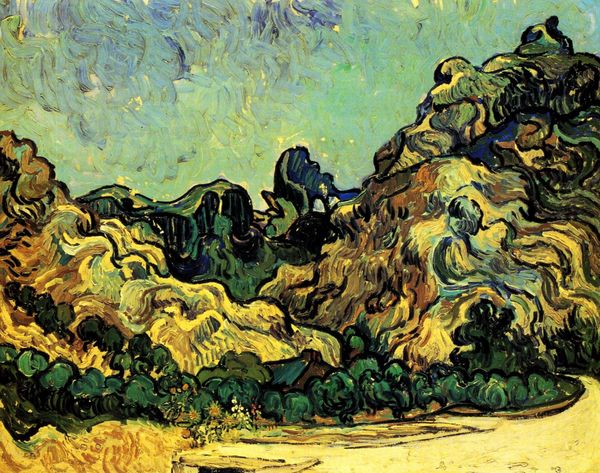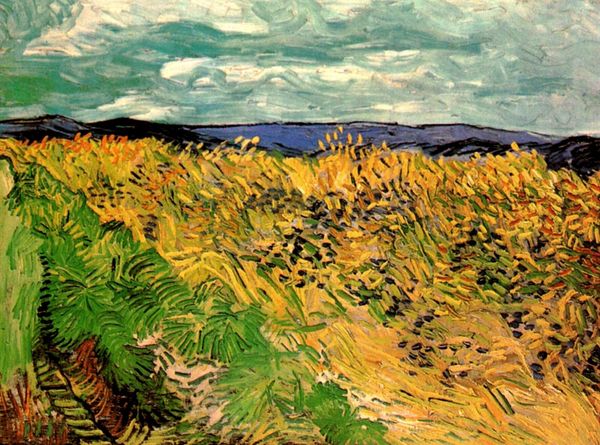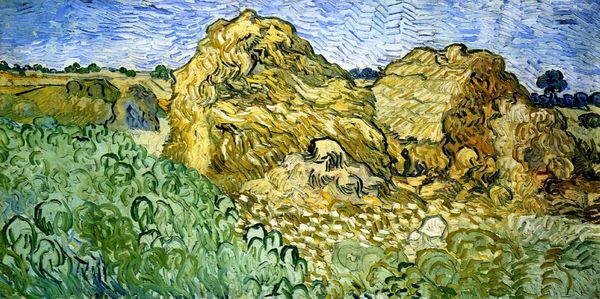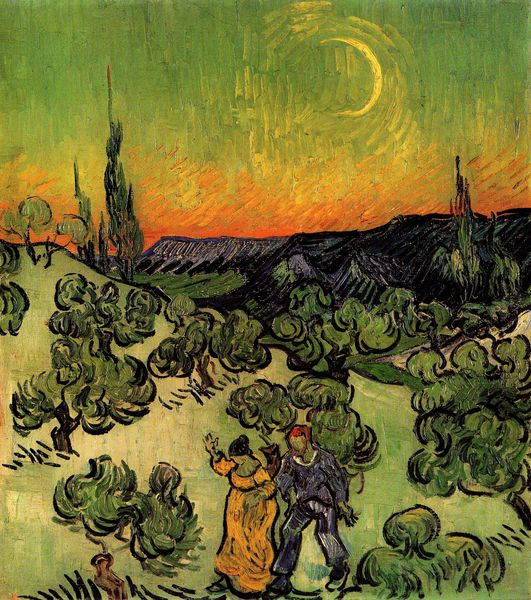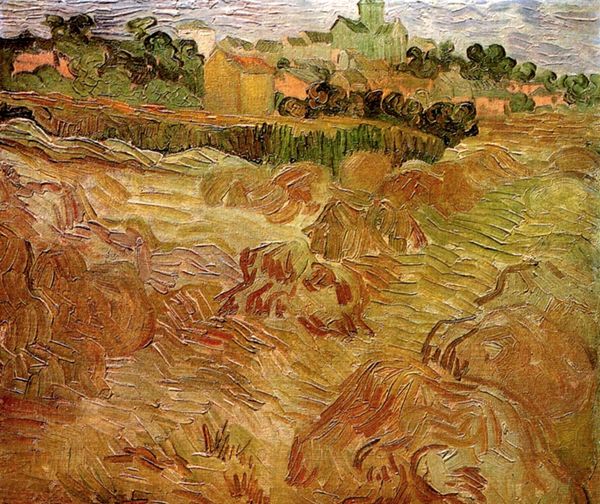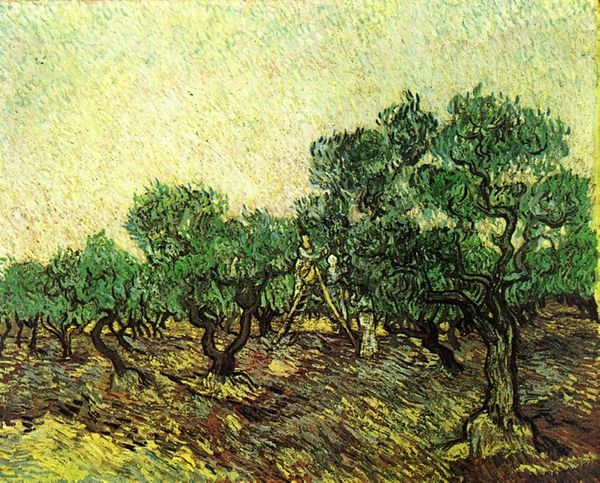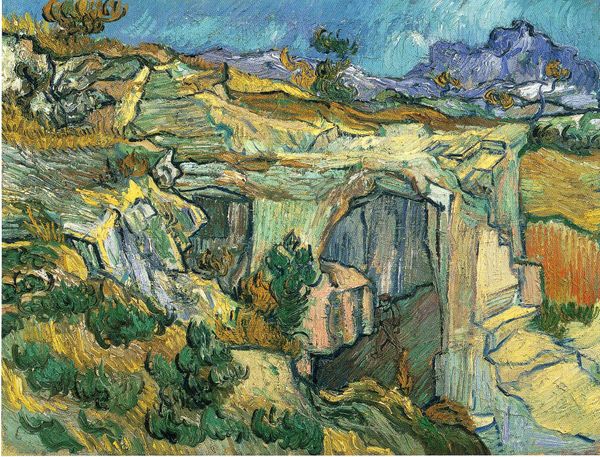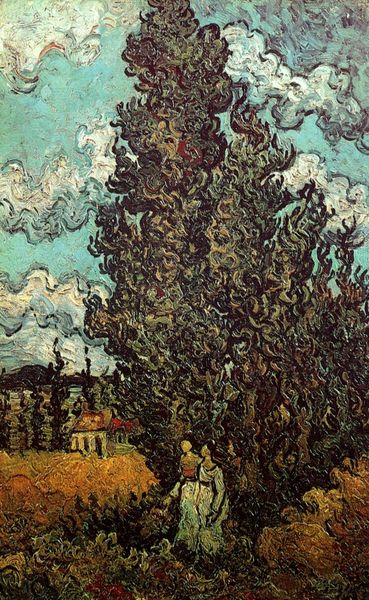
Dimensions: 45.5 x 60 cm
Copyright: Public domain
Editor: This is "Wooden Sheds," an oil painting made en plein-air by Vincent van Gogh in 1889. I find the composition quite striking, with the strong diagonal lines of the landscape contrasting against the vertical trees, even though it’s an everyday rural scene. What draws your eye in this piece? Curator: The relationship between the foreground and background. Note how Van Gogh uses impasto to build up the surface in the lower registers. These swirling brushstrokes create a dynamic energy that pulls the viewer in, yet the brushwork in the trees in the distance is more constrained. Observe how the house becomes a central anchor by establishing a clear, orthogonal form. Editor: That's a great point! I hadn't considered how the paint application changes the depth of field. Do you think the heavier texture in the foreground is about emphasizing the artist's subjective experience? Curator: It certainly functions as a visual device, perhaps reflecting Van Gogh’s own agitation with reality, a flattening of the picture plane. Note too the color palette. It is more limited than some of his other works from this period. The complementary relationship between blues and oranges certainly vibrates the canvas. What kind of emotion is conveyed, do you think? Editor: I think the painting is somewhat tense, the sky and the cypress trees evoke almost anxiety. I like how you have noticed that chromatic relationship. I've really begun to understand how Van Gogh created a tense landscape from ordinary rural life by distorting perception. Curator: Precisely. Now we both note how the dynamism of the work lies in the tensions that we detect with careful observation.
Comments
No comments
Be the first to comment and join the conversation on the ultimate creative platform.
